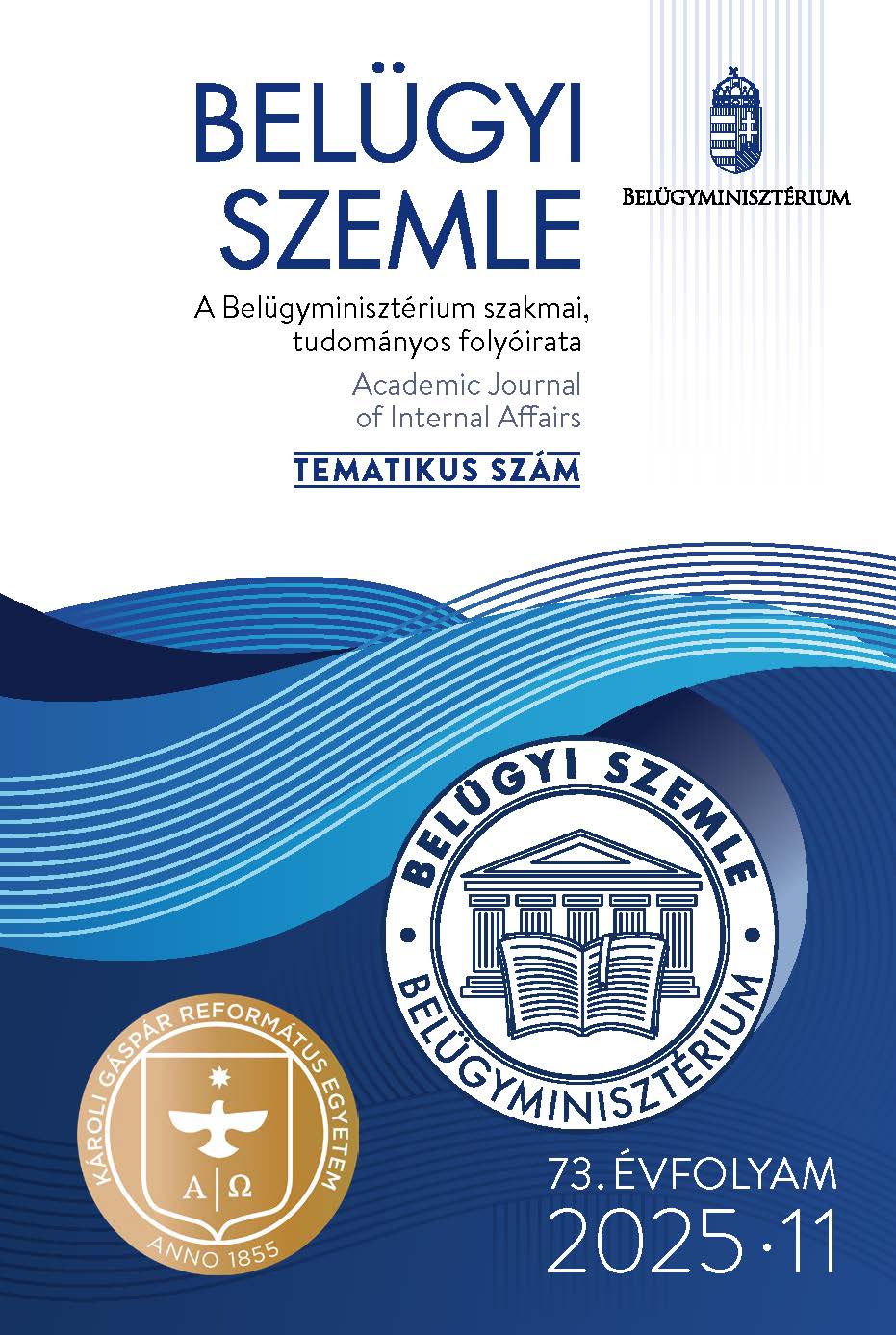Abstract
Aim: The aim of this study is to explore the relationship between economic crime and cryptocurrencies, particularly with regard to the role that crypto assets can play in the commission of economic crimes and in removing illicitly obtained assets from the authorities' purview. The main hypothesis is that cryptocurrencies can be interpreted not only as a financial innovation, but also as a means of opening up new dimensions in the field of crime.
Methodology: The analysis is based on qualitative research methods, drawing on the law enforcement experience of the prosecution office and the findings of a targeted investigation conducted by the Prosecutor General's Office into cryptocurrencies.
Findings: The primary finding of the study is that the decentralized, pseudo-anonymous nature of cryptocurrencies can pose significant risks: it can facilitate the spread of economic crime and also affect the structure of economic crimes. The anonymity and easy access characteristic of cryptocurrencies hinder the effective action of law enforcement authorities in detecting and prosecuting perpetrators. Crypto assets are also suitable for withdrawing criminal proceeds from the authorities.
Value: The study highlights that, thanks to technological advances and the spread of digitalization, economic criminals now have a wider range of tools at their disposal. White-collar criminals have no particular problem adapting to the changed global circumstances; in fact, they use them to their advantage when committing crimes. The prosecution's experience in applying the law and its investigation into cryptocurrencies can contribute to the development of law enforcement practices.
References
Felhasznált irodalom
Eurojust & European Judicial Cybercrime Network. (2025, March 8). Crypto assets guide for judicial authorities (pp. 18-22). Eurojust.
Legfőbb Ügyészség (2021). Összefoglaló jelentés „Az elektronikus pénz és a virtuális fizetőeszközök – köztük a kriptovaluták – lefoglalásának, illetve zár alá vételének komplex elemzése” témájú célvizsgálatról.
Mezei P. (2022). NFT-k a szerzői jog világában. Iparjogvédelmi és Szerzői Jogi Szemle, 16(126), 20-24.
Polt P. (2021). A 21. század kihívásainak hatása a büntetőeljárásra – Kriptovaluták, azaz az új vagyoni értékek büntetőjogi kérdései. In Barabás, A. T. & Christián L. (Szerk.), Ünnepi tanulmányok a 75 éves Németh Zsolt tiszteletére: Navigare necesse est (pp. 419-427). Ludovika Egyetemi Kiadó.
A cikkben szereplő online hivatkozások
URL1: Országgyűlési beszámolók. https://ugyeszseg.hu/az-ugyeszsegrol/orszaggyulesi-beszamolok/
URL2: Összefoglaló: (EU) 2023/1114 rendelet a kriptoeszközök piacairól. https://eur-lex.europa.eu/HU/legal-content/summary/european-crypto-assets-regulation-mica.html
Alkalmazott jogszabályok
évi CXXXVIII. törvény a befektetési vállalkozásokról és az árutőzsdei szolgáltatókról, valamint az általuk végezhető tevékenységek szabályairól
évi CCXXXVII. törvény a hitelintézetekről és a pénzügyi vállalkozásokról
évi LIII. törvény a pénzmosás és a terrorizmus finanszírozása megelőzéséről és megakadályozásáról
évi XC. törvény a büntetőeljárásról
Az Európai Parlament és a Tanács (EU) 2018/843 irányelve (2018. május 30.) a pénzügyi rendszerek pénzmosás vagy terrorizmusfinanszírozás céljára való felhasználásának megelőzéséről szóló (EU) 2015/849 irányelv, valamint a 2009/138/EK és a 2013/36/EU irányelv módosításáról
Az Európai Parlamentnek és a Tanácsnak a kriptoeszközök piacairól szóló 2023/1114 rendelete

This work is licensed under a Creative Commons Attribution-NonCommercial-NoDerivatives 4.0 International License.
Copyright (c) 2025 Academic Journal of Internal Affairs
